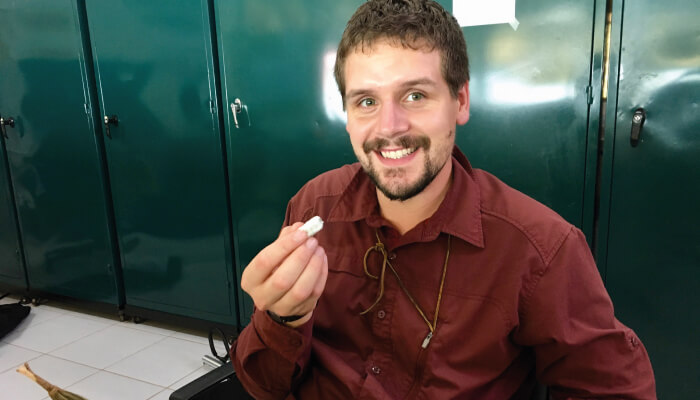Metabolomic data from the Smithsonian Tropical Research Institute’s Barro Colorado Island Research Station in Panama show that pressure from hungry
insects is a driver of diversity in tropical environments (1). By studying the chemical defenses of nine different species of Inga (“ice cream bean” trees) and recording their insect herbivores, the authors showed that trees with similar phytochemistry and shared herbivores were less successful – important proof that insect herbivores drive diversity in rainforest plants. Lead author Dale Forrister (University of Utah), tells us more about analytical chemistry in the jungle.

The question of how so many species can coexist in tropical forest has been debated for decades. In this study, we attempted to leverage our unique dataset on resources and defensive traits and herbivore–host associations to more directly test the role of herbivores. We chose to focus on plants in the genus Inga, commonly known as ice cream bean trees, in reference to their sweet fruit.
Characterizing the chemical profile of Inga species and quantifying the similarity between species was tough. Every step required some innovation and creativity – from engineering ways to dry leaf samples in an atmosphere of 100 percent humidity to developing the analytical methods for comparing chemical similarity between species.
First, we find and identify our focal species. We then collect leaves that are still expanding and dry them using silica gel. Back in the lab, we grind the leaves and then extract them using organic solvents. LC-MS allows us to isolate and quantify the abundance of individual compounds within the complex mixture of secondary compounds in our plant extracts, while MS/MS spectra provide structural information. The end result is a comprehensive view of the chemical profile for each species.
In many ways, the field work is the best part and fuels the many hours spent in the lab or on the computer. Working in these hyper-diverse tropical rainforests clearly shows how complex the web of interacting species really is. It was fun to try the ice cream bean fruit too – they’re really good and quite different from any other fruit I had tried before. They almost taste like cotton candy.
We are currently working in the Yasuni National Park in Ecuador, a forest that harbors three times the diversity that we find in Panama. We want to see if similar patterns emerge and to test our hypothesis experimentally by creating “common gardens” to see if species with similar herbivore defenses are less able to co-exist.
Very little is known about natural products in nature. Despite the fact that nearly a third of drugs used by humans come from nature, many directly from tropical forests, the vast majority of species are untested. Metabolomics has great potential for exploring this untapped chemical diversity, offering scientists a powerful new toolbox. Chemicals play a huge role in nature – from defenses to communication, they are the medium through which species interact. Being able to quantify this in a meaningful way provides a truly unique perspective.
References
- DL Forrister, “Herbivores as drivers of negative density dependence in tropical forest saplings”, Science, 363, 1213–1216 (2019). DOI: 10.1126/science.aau9460




